Statistics New Zealand has today released national accounts figures for the March quarter of 2017, with Gross domestic product (GDP) rising by 0.5% over the quarter to be up 3.0% year-on-year. However, GDP per capita fell by 0.1% in the March quarter, which follows the 0.2% fall in the December quarter. Over the year, per capita GDP rose by 0.9%.
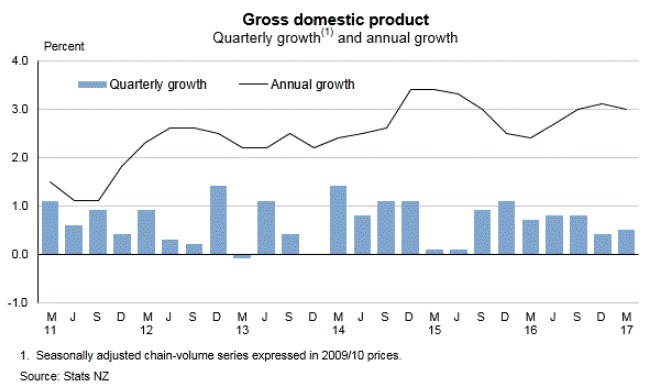
The main movements by industry were:
- Agriculture was up 4.3 percent, driven by higher milk production. This was the highest quarterly growth for agriculture since September 2014.
- Retail trade and accommodation was up 1.8 percent, driven by an increase in motor vehicles and parts.
- Manufacturing was up 1.0 percent, with transport equipment, machinery and equipment manufacturing being the largest contributor.
- Construction was down 2.1 percent, with all construction industries decreasing. This was the first fall since June 2015.
- Transport, postal, and warehousing was down 2.0 percent, in part due to lower transport support services.
The main movements in the expenditure measure of GDP in the June quarter were:
- Household consumption expenditure was up 1.3 percent, driven by spending on durable goods and services.
- Investment in fixed assets was up 1.2 percent, due to increased investment in plant, machinery and equipment.
- Inventories built up $338 million, due to distribution inventories.
- Exports of goods and services was down 0.4 percent, due to exports of dairy products.
- Imports of goods and services was up 1.3 percent, in part due to imports of consumption goods and passenger cars.
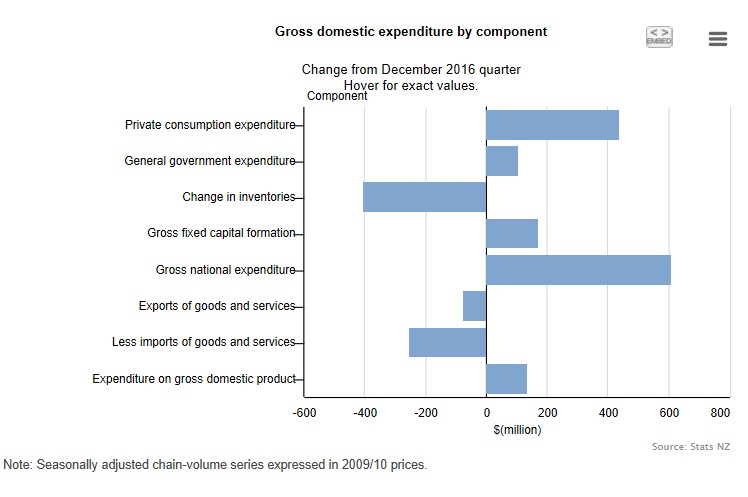
Real gross national disposable income (RGNDI) – which measures the real purchasing power of New Zealand’s disposable income – fell by 0.3% over the March quarter but was up by 3.9% over the year, courtesy of increases in export prices relative to import prices (i.e. rising terms-of-trade):
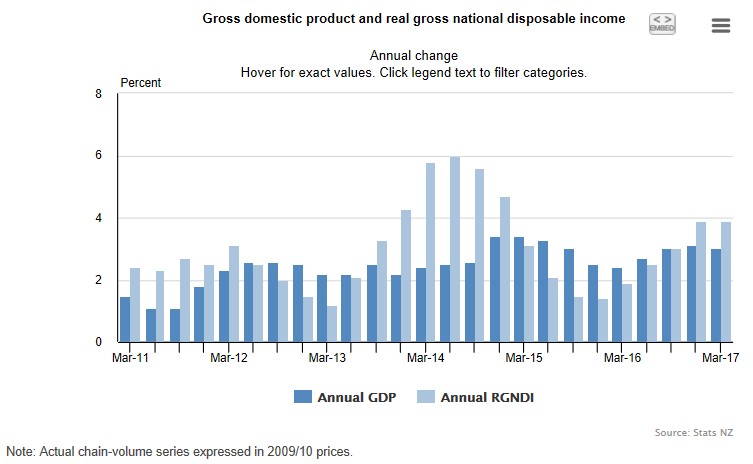
Moreover, RGNDI per capita fell by 0.9% in the March quarter to be up 1.8% year-on-year.
Statistics New Zealand points out that New Zealand’s economy is growing faster than most of its trading partners:
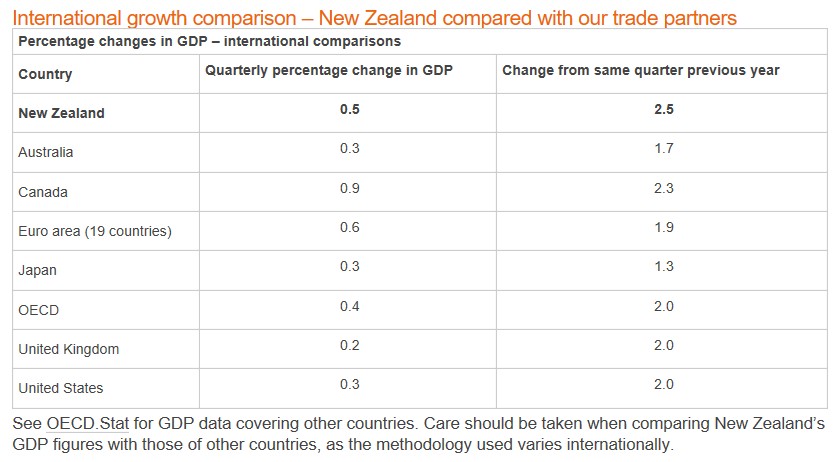
However, it should be noted that New Zealand’s population is growth is among the fastest in the world at 2.1%, owing to the nation’s high immigration program:
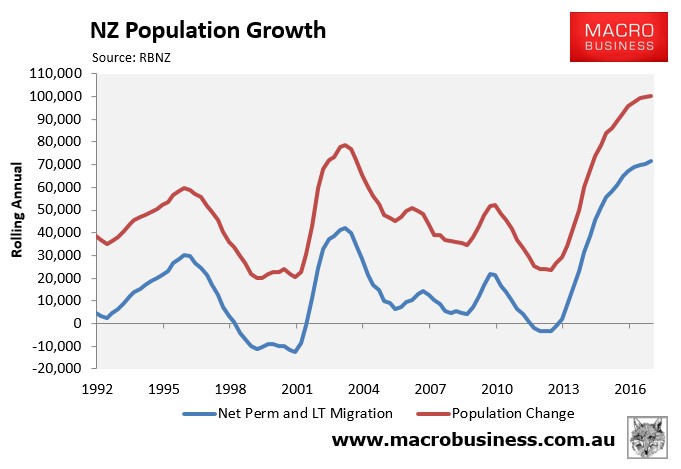
Thus, New Zealand’s growth figures are being heavily inflated, much like Australia’s have been over the past 15 years.
In per capita terms, New Zealand’s economy has just entered a ‘technical recession’ of two consecutive quarters of negative growth.

